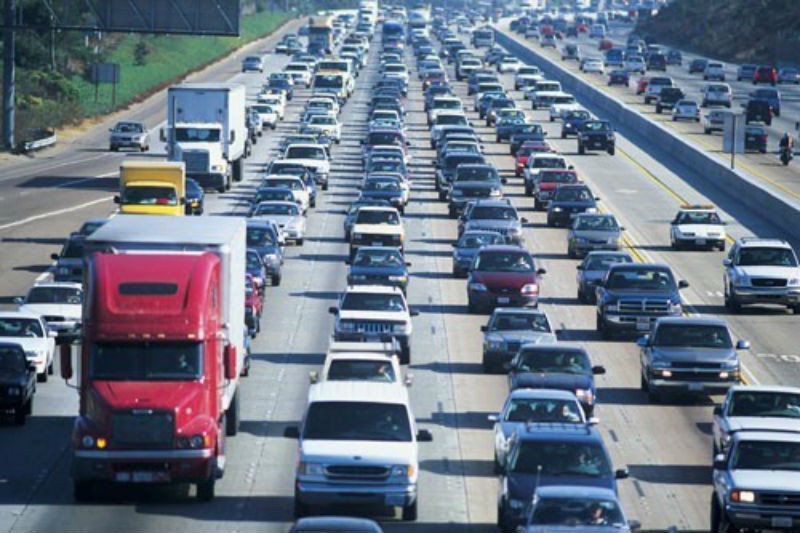The average commute into and out of Williamson County is nearing half an hour, to and from work, during rush hour, according to U.S. Census data.
Currently, that commute includes nearly 120,000 people, about equal numbers each way, every morning and evening, between Davidson and Williamson Counties, according to Williamson, Inc., data.
Just like the area’s population, traffic increases each year. According to U.S. Census data, 100 new people move into the Middle Tennessee region each day. Davidson County is the hub, and with its recently unveiled, 15-year transit plan, things will grow from there. But perhaps equally important, but sometimes overlooked, is that Williamson County- – the fastest growing county in the state, according to Census Data– is more connected to that hub and than any other county.
“No two counties are more connected in Tennessee than Davidson and Williamson Counties,” Williamson Inc., CEO Matt Largen said. “We share the same labor force. The same number of people commute from here to Davidson as commute from Davidson to here.”
That is why for the county and the region, “every tool in the box” needs to be considered, according to a recent comprehensive traffic strategy study by the county.
“If we don’t do something about the traffic that comes with growth, then people will stop coming, and we will stop growing,” County Mayor Rogers Anderson, who himself is looking at a need of more than $100 million in road projects by 2030 just to keep the status quo intact, has said. That is just on county roads.
Some tools are available now, like HOV lanes, and others will need to be developed, like Bus Rapid Transit (BRT) or light rail.
But something like the HOV lane can be used now and later. Enforcing HOV laws now– correct use of HOV lanes have shown to reduce commute times by half in places like Washington, D.C. And later, HOV lanes can be used as the corridors for BRT.
What transit will look like in Williamson County will be shaped by the results of the ongoing Southern Corridor Study being performed by the Nashville Area Metropolitan Planning Organization.
“The study will help build the map out south and help us chart our course in the transit system we pick that makes the most sense for our community,” Largen said.
It will take about a year for its answers, Largen added.
Whatever the study shows as the shape of transit, in terms of form Rapid Bus Transit is a front-runner as a long-term local method. A recent trip of county leaders to Denver, a good analog and model and a place that has seen similar growth to Mid-Tenn regionally, showed off the city’s rapid bus system, which gets a lot of people quickly from suburbs to downtown.
With so many people going back and forth between Williamson and Davidson for work each day, rapid buses struck many county leaders as ideal for here.
“I think that it is something definitely worth looking at for the I-65 corridor between Williamson and Davidson Counties,” Largen said. “It has real possibilities to actually start cutting down on congestion.”
But rapid buses need a lane to go in. More and more, local community leaders see the HOV lane as the key to building that bus system.
Something like that is still years away in Williamson County. There are things that can be done now to reduce traffic with existing systems, and also ready the way for future rapid transit.
One of those things, Largen said, is enforce the current HOV lane. This week Williamson, Inc.’s executive board will decide whether or not to officially endorse legislation that will make the HOV lane what it is supposed to be. This includes enforcement. They will also consider possibly supporting a southbound HOV lane– currently on I-65 the HOV lane is only in use northbound out of Williamson County for two hours in the morning and southbound for two hours in the evening. This makes little sense, practically, considering that a roughly equal number of commuters are going each way each rush hour, according to Largen.
The chamber will likely vote to support on Thursday “The Rural Rideshare Commuter Incentive Act” a bill designed to educate and install better tools for enforcing HOV laws so that the region’s exploding population of long-distance commuters have greater incentives to carpool and bring fewer cars to Nashville.
“If you had an HOV lane that was actually enforced, maybe bus rapid transit would work on the lane we have already, and you wouldn’t have to build another lane,” Largen said. “You would have it for people who are actually carpooling and you would have it for bus rapid transit.”




















I have an electric vehicle and drive from Brentwood to Downtown Nashville every morning around 7:00 am and return 4:30-5:00 pm. Every day I am surprised to find single driver gas cars in the HOV lane, with no enforcement. So I called TDOT to inquire about this apparent oversight and was told that the HOV lane is not enforced. It would seem to me that enforcing this lane would not only be a significant source of revenue to the county or state, but would also encourage carpooling and decrease the number of cars on the highway each day.
[…] now, with an eye to the future. Recently the Williamson County chamber of commerce unanimously endorsed legislation to increase enforcement of HOV lanes, put forth by Rep. Sam Whitson and sponsored […]
[…] What the Future of Williamson County Traffic Looks Like […]